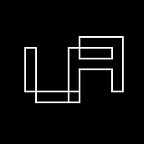UniArts: Value Network For Original Fine Art
Artists of all backgrounds can agree that while NFTs have proven to be a huge leap forward for the world of art, getting out there and making a living with your works has only marginally improved. Gaining recognition is no easy task, especially on social media where attention spans are low, and where there’s a clutter of low quality content overshadowing good posts.
UniArts found that the best course for solving this issue and creating the best platform for NFT art is by essentially connecting the artists and art connoisseurs and letting democratization be the judge of it all. Here, both parties are incentivized to engage with one another, and the result is a profitable engagement in a decentralized environment.
What Is An NFT?
NFT stands for non-fungible token, non-fungible meaning non-replaceable. Since each token is unique they make for an ideal means of certifying and verifying the ownership of digital goods such as digital art.
Any digital asset can be minted into an NFT using blockchain technology, and these tokens are then processed and stored in a digital wallet. The way UniArts has integrated NFTs in its ecosystem however puts them at the cusp of a significant breakthrough in art collection.
What Is UniArts?
UniArts is a decentralized mechanism where both creators and collectors of art alike are utilized in determining the fair market value of the underlying artwork.
This is all possible thanks to the UniArts mainnet, which is a blockchain network specifically developed using specialized NFTs. The network provides relevant and essential infrastructure, as well as community voting incentives, DAO curation, and art grants — resulting in the democratization of arts.
How Does It Work?
The fundamental concept that makes this process reliably work is by implementing some manner of costs and rewards to the NFT voting process. Whereas on social media sites votes come at no costs, on UniArts, the requirement to vote comes in the form of staking, where users have to lock their UART tokens for a minimum of 28 days. On the other hand however, voters are incentivized to vote as when their voted-on NFTs get sold, they receive a portion of the revenue proportional to the sale price.
This intricate balance of costs and rewards encourages extra attention and care when voting, as users want to make sure that they vote on the works that will be the most successful, all the while being aware that they don’t have infinite votes to waste.
For an artist, this means that the votes they see on their works not only implies possible success, but also a strong belief in their works, and by extension, their abilities. Once an artist mints an NFT, they can start receiving votes immediately, and the more votes it receives, the more tokens get tied to the NFT. The added value further drives its demand and enables appreciators to pin the NFT on their address to receive tokens.
Artists can choose to keep their creations, pinning them to their own address and directly receiving the benefits.
Finding Fair Market Value
At a minimum, artwork would be valued using the volume of minted tokens, and UART holders carefully decide this number. Below is a simple illustration that demonstrates the mechanics of NFT creation, staking, voting and rewards:
And for an example of UART token allocation, the below illustration represents a typical scenario and how the allocation plays out:
All of these parts are held together by the standards set by UniArts, which are based on the underlying principles of decentralization and the democratization of art; and the notion that the best method of art valuation is achieved by bringing the entire community together in a fair and fertile ecosystem.
